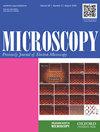Three-dimensional ultrastructure and hyperspectral imaging of metabolite accumulation and dynamics in Haematococcus and Chlorella
IF 1.8
4区 工程技术
引用次数: 4
Abstract
Basic as well as applied phycological researches have developed alongside light and electron microscopy. This article reviews recent studies of bioimaging in the context of algal biorefining, and explains how 3D-TEM imaging are becoming useful tools for analyzing and monitoring the dynamics of algal cells. Phycology has developed alongside light and electron microscopy techniques. Since the 1950s, progress in the field has accelerated dramatically with the advent of electron microscopy. Transmission electron microscopes can only acquire imaging data on a 2D plane. Currently, many of the life sciences are seeking to obtain 3D images with electron microscopy for the accurate interpretation of subcellular dynamics. Three-dimensional reconstruction using serial sections is a method that can cover relatively large cells or tissues without requiring special equipment. Another challenge is monitoring secondary metabolites (such as lipids or carotenoids) in intact cells. This became feasible with hyperspectral cameras, which enable the acquisition of wide-range spectral information in living cells. Here, we review bioimaging studies on the intracellular dynamics of substances such as lipids, carotenoids and phosphorus using conventional to state-of-the-art microscopy techniques in the field of algal biorefining.红球藻和小球藻代谢产物积累和动力学的三维超微结构和高光谱成像
基础和应用的生物生态学研究已经随着光学和电子显微镜的发展而发展起来。本文综述了近年来在藻类生物精炼背景下对生物成像的研究,并解释了3D-TEM成像如何成为分析和监测藻类细胞动力学的有用工具。Phycology与光学和电子显微镜技术一起发展。自20世纪50年代以来,随着电子显微镜的出现,该领域的进展急剧加快。透射电子显微镜只能在2D平面上获取成像数据。目前,许多生命科学都在寻求用电子显微镜获得3D图像,以准确解释亚细胞动力学。使用连续切片的三维重建是一种可以覆盖相对较大的细胞或组织而不需要特殊设备的方法。另一个挑战是监测完整细胞中的次级代谢产物(如脂质或类胡萝卜素)。这在高光谱相机中变得可行,因为高光谱相机能够获取活细胞中的宽范围光谱信息。在这里,我们回顾了藻类生物精炼领域中使用传统到最先进的显微镜技术对脂质、类胡萝卜素和磷等物质的细胞内动力学进行的生物成像研究。
本文章由计算机程序翻译,如有差异,请以英文原文为准。
求助全文
约1分钟内获得全文
求助全文
来源期刊

Microscopy
工程技术-显微镜技术
自引率
11.10%
发文量
0
审稿时长
>12 weeks
期刊介绍:
Microscopy, previously Journal of Electron Microscopy, promotes research combined with any type of microscopy techniques, applied in life and material sciences. Microscopy is the official journal of the Japanese Society of Microscopy.
 求助内容:
求助内容: 应助结果提醒方式:
应助结果提醒方式:


